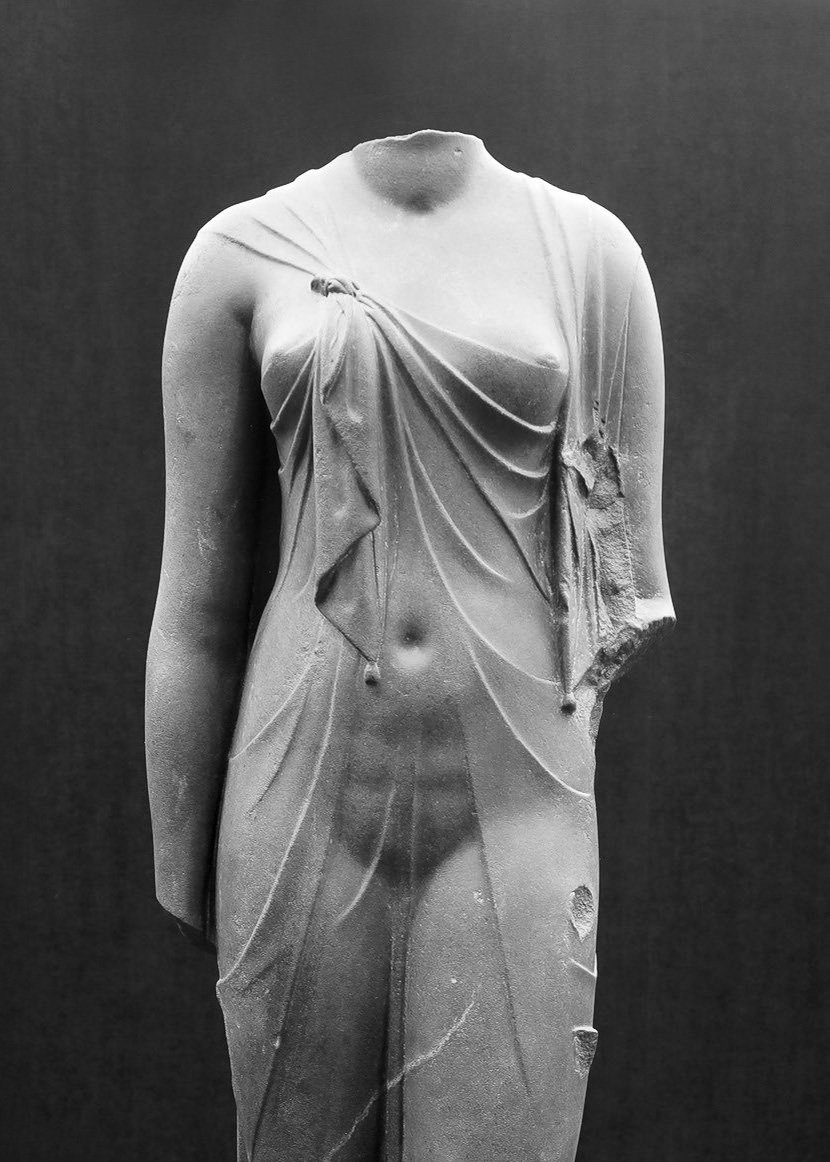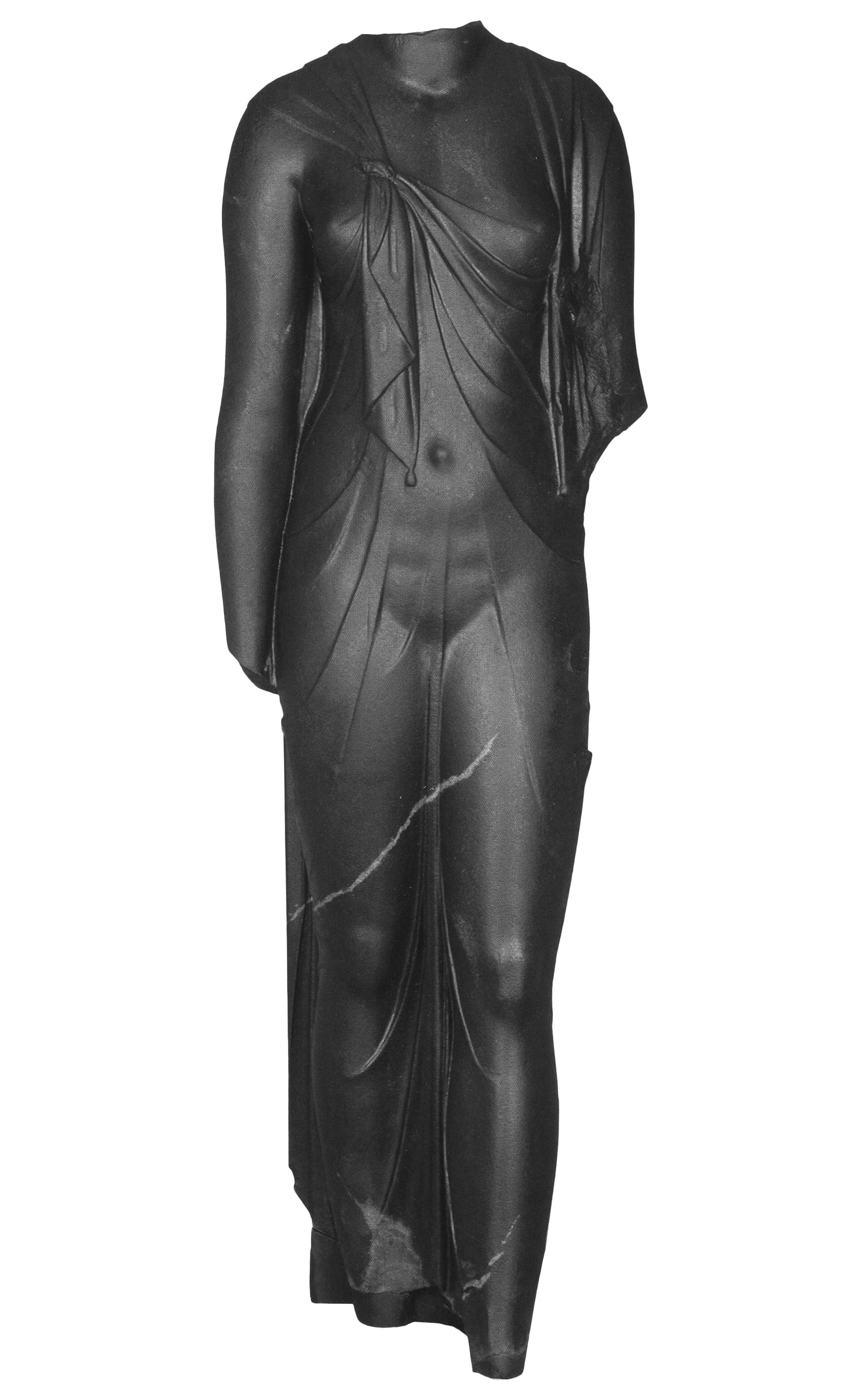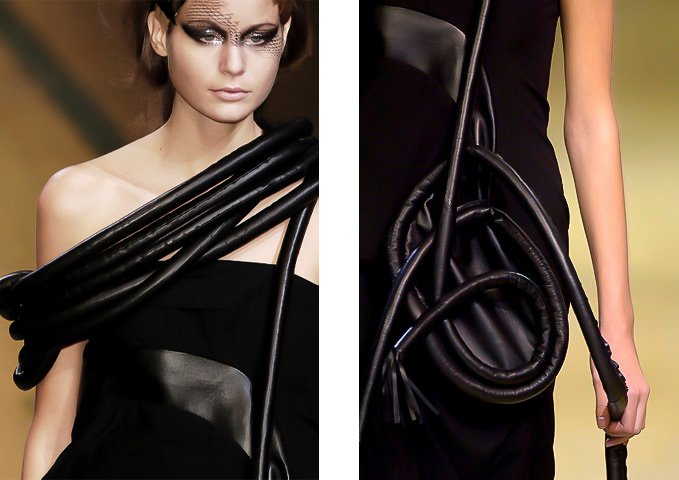HOLD FAST
Resembling the statue of Arsinoë being raised out of the water of Abū Qīr Bay, Yohji Yamamoto’s models floated down his Spring 2006 runway emulating ethereal bowsprit figureheads...
The Statue of Arsinoë being raised out of the water of Abū Qīr Bay • June 3, 2000 • Egypt • Christoph Gerigk • Image courtesy of the Franck Goddio Hil Foundation
More than 1200 years ago, two cities on Egypt’s north coast disappeared. They apparently sunk into the Mediterranean Sea, victims of rising tides and seismic disruption. No trace remained of the cities of Thonis-Heracleion and Canopus and their many splendors. What was once a prime trade center in the Greek world and the site of a major temple was forgotten. That is, until 2002, when divers searching for sunken ships, stumbled onto the lost Egyptian cities. The team of divers led by French underwater archaeologist Franck Goddio discovered the treasures that date back to the Pharaohs, Greeks, Romans and early Muslims during two years of exploration and excavation. The discovery is considered one of the greatest finds in the history of underwater archaeology.
The statue of Arsinoë II , mounted on frame, being raised out of the water of Aboukir Bay, Egypt dates to the Graeco-Roman Period, Ptolemaic Period, 3rd Century B.C.E. “In this statue, the Ptolemaic queen Arsinoë II, is the embodiment of Aphrodite, the Greek goddess of beauty and ‘fortunate sailing’. It is a perfect combination of Egyptian and Greek style. While the choice of a local dark stone and the queen’s striding posture are Egyptian in style, the sensual rendering of her flesh, revealed through the play of the transparent garment, is reminiscent of Greek masterpieces. She was incorporated into Egyptian cult and temples, and was sometimes recognised by Egyptians as Isis, mother goddess and patron of magic. She was worshipped extensively by Egyptians and Greeks alike. This exceptional sculpture stood in a temple at the city of Canopus.” • The British Museum
The Statue of Arsinoë being raised out of the water of Abū Qīr Bay • June 3, 2000 • Egypt • Image courtesy of Mohammed Al-Sehiti AFP via Getty Images
Gemma Ward modeling an ensemble from Yohji Yamamoto’s Spring / Summer 2006 Collection • Craig McDean
Statue of Arsinoë • Granodiorite • 3rd Century B.C. • Canopus
Statue of Arsinoë • Granodiorite • 3rd Century B.C. • Canopus • Image courtesy of Egypt’s Sunken Treasures edited by Franck Goddio
The Statue of Arsinoë being raised out of the water of Abū Qīr Bay • June 3, 2000 • Egypt • Image courtesy of Mohammed Al-Sehiti AFP via Getty Images
French underwater archaeologist Franck Goddio admiring the Statue of Arsinoë after it was raised out of the water of Abū Qīr Bay • June 3, 2000 • Egypt • Image courtesy of Reuters
Lily Cole modeling a gown on Yohji Yamamoto’s Spring / Summer 2006 runway
Statue of Arsinoë • Granodiorite • 3rd Century B.C. • Canopus
The Isis Knot featured on the Statue of Arsinoë • Granodiorite • 3rd Century B.C. • Canopus • Image courtesy of Egypt’s Sunken Treasures edited by Franck Goddio

















